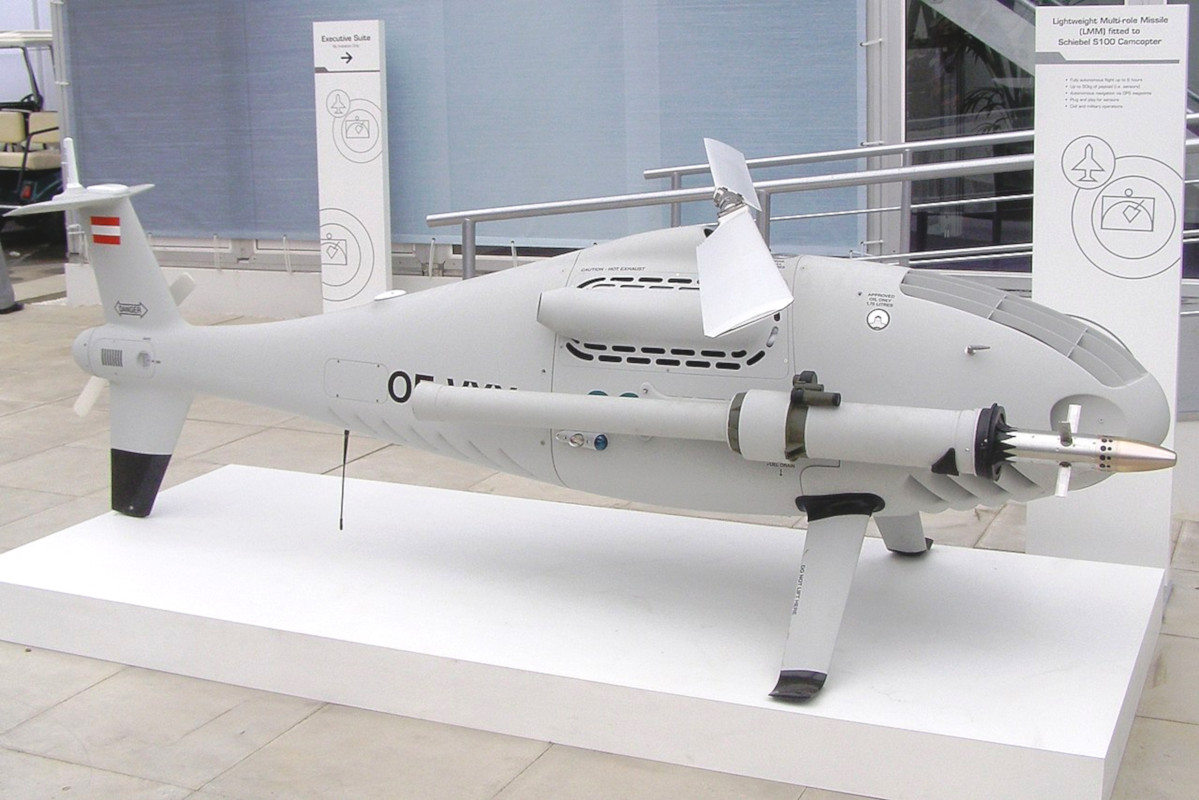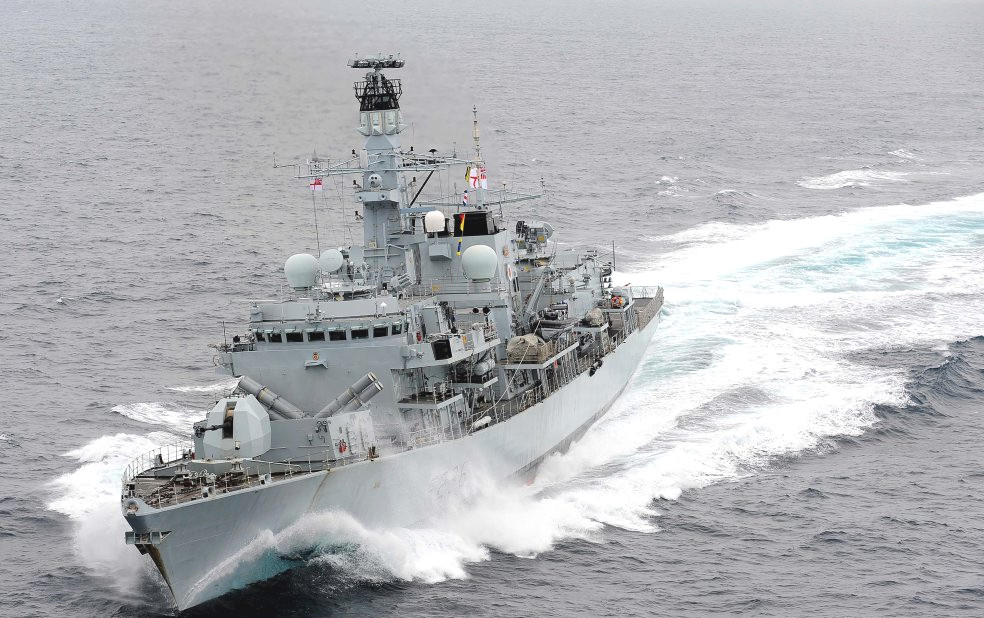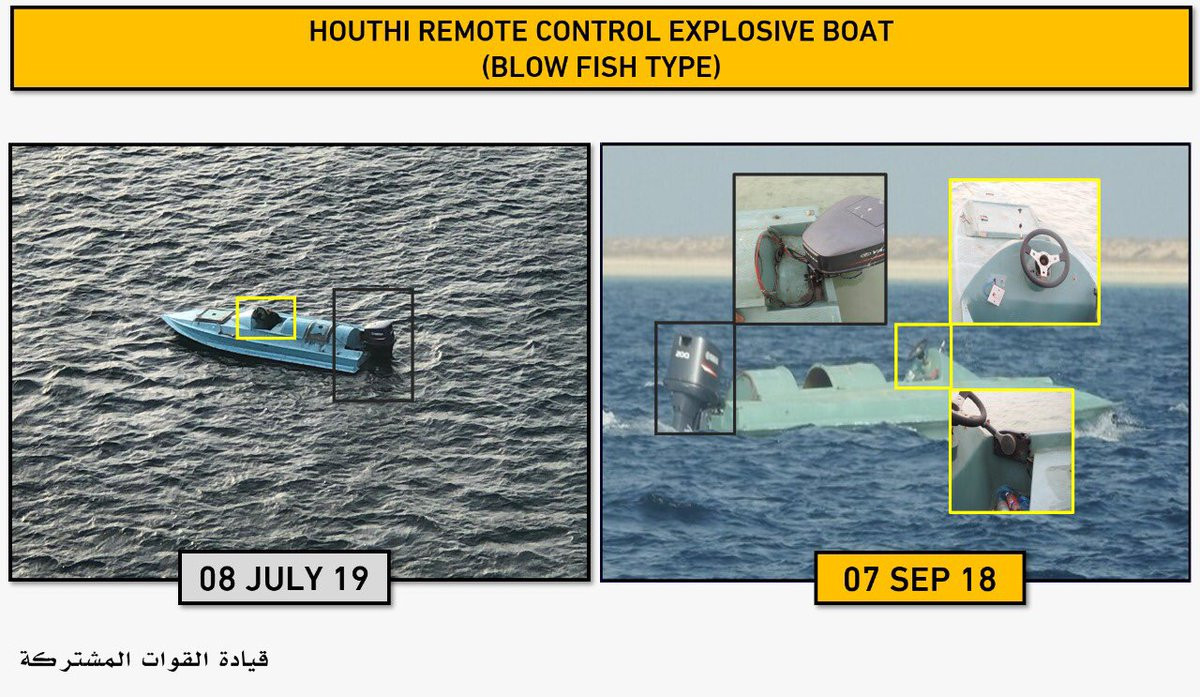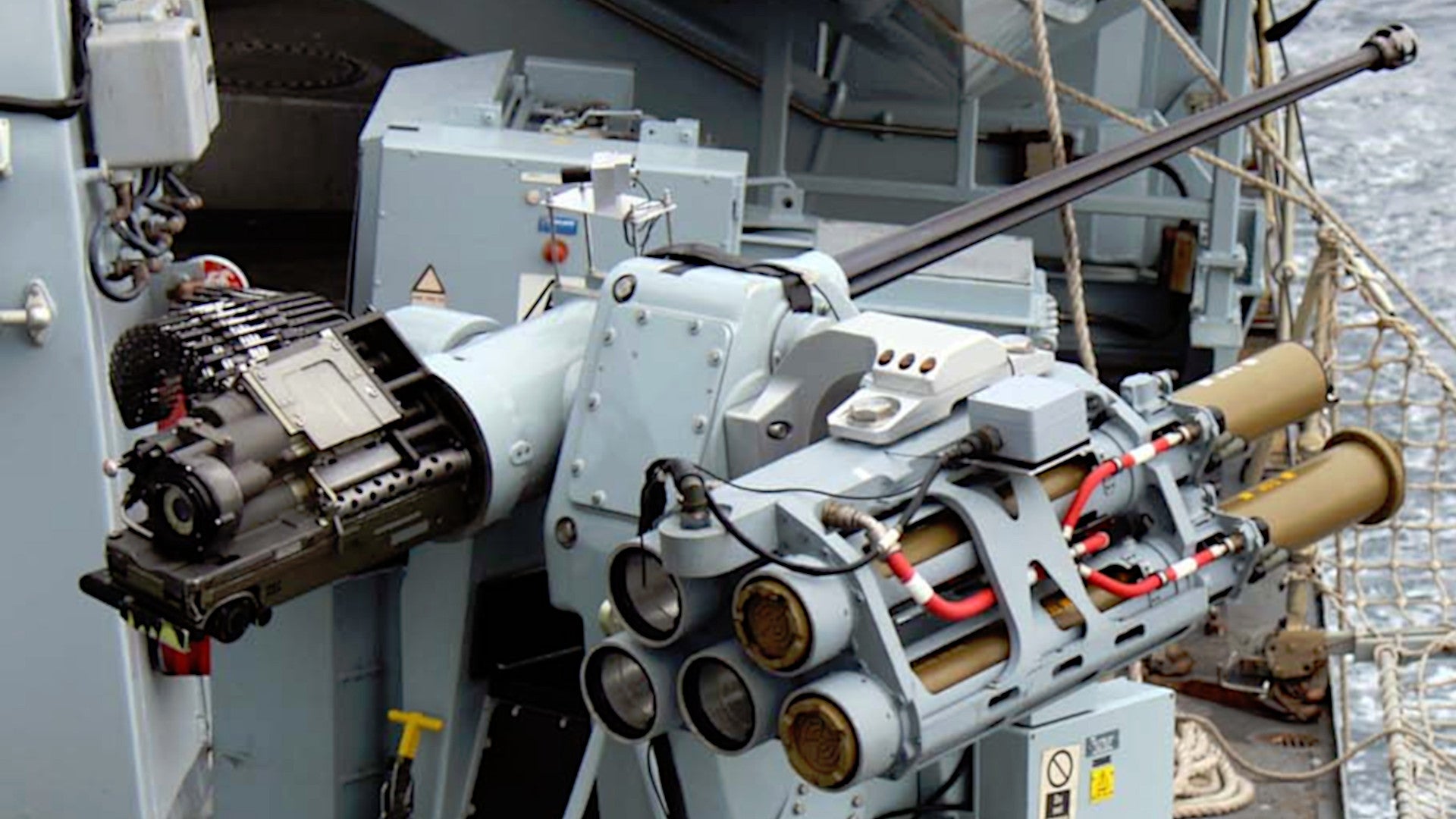A U.K. Royal Navy Type 23 frigate has successfully destroyed a mock fast attack craft with a Martlet missile during a test in the Irish Sea. The ship fired the weapon using a new launcher assembly attached to one of its existing DS30M Mark 2 remotely operated 30mm cannon turrets. This new combination offers an easy way to add another layer of point defense capabilities to the Type 23s, as well as other Royal Navy ships, especially to protect against swarms of small watercraft and explosive-laden suicide boats, a threat that has become particularly pronounced in the Middle East in recent years. But the super-adaptable miniature missiles may also soon find their way onto new platforms, such as drones, and performing new roles, including short-range air defense.
In total, HMS Sunderland fired four Martlets, also known as the Thales Lightweight Multirole Missile (LMM), during the test, according to an official Royal Navy news item dated July 16, 2019. The story did not say when specifically the event had occurred, but did say that it took place within the Aberporth Range at the southern end of Cardigan Bay off the coast of Wales.
“The current defense against fast inshore attack craft, the 30mm gun, is highly effective for closer range engagements,” Royal Navy Lieutenant Commander George Blakeman, the Weapon Engineer Officer aboard Sunderland, said in a statement. “By adding the missile to the gun mount it is anticipated it will extend the reach of the ship’s defensive systems – key to successful defense against fast craft using swarm attack tactics.”
The testing in Cardigan Bay also involved firing the 30mm gun to successfully demonstrate that there was no notable loss of accuracy from the addition of the missile launcher. The first of the four missile launches was specifically to see if the backblast and shock of firing would damage the cannon, the weapon mount, or the ship, which it did not. The last three launches involved missiles carrying telemetry recording equipment in the place of their warheads to track their flight performance
At just over four feet long and with a weight of just under 29 pounds, Martlet is a small missile. For comparison, the U.S.-made AGM-114 Hellfire, which the U.S. Navy is integrating into its Littoral Combat Ships (LCS) to defend against similar threats, weighs more than 100 pounds and is over five feet in length. The latest variant of the much larger RIM-116 Rolling Airframe Missile (RAM) is primarily used in the close-in air defense role, but also provides a similar anti-surface capability for many American and allied warships.
The Thales-built Martlet missiles have multi-mode seekers that use beam-riding laser guidance to get close to the target and then switch to an imaging infrared seeker in the terminal phase of flight. This helps ensure a hit even if the laser beam gets disrupted for some reason. They also have a laser-ranging proximity sensor to trigger their small fragmentation warheads, which weigh roughly seven pounds, in the event of a glancing shot.
Development of the Martlet, originally called the Future Air-to-Surface Guided Weapon (Light), or FASGW (L), began in 2008 and the U.K. Ministry of Defense placed an order for an initial batch of 1,000 missiles in 2011 specifically for the Royal Navy’s AgustaWestland AW159 Wildcat helicopters. Though the weapons were initially expected to enter service in 2015, the service does not expect the Wildcats to be flying with the small missiles until next year.

The Wildcats have a pair of stub wings, each with two pylons, and any of those hardpoints will be able to accommodate five- or seven-tube clusters of Martlets, for a maximum load of 28 missiles. The Royal Navy had initially intended for the Wildcats armed with these missiles to provide protection for ships against swarming boat attacks. The helicopters will also eventually be able to carry the Sea Venom lightweight anti-ship missile to engage larger targets.

But the Royal Navy has since decided that it also makes sense to integrate the missiles onto ships themselves to provide an additional defensive capability. This makes good sense as Lieutenant Commander George Blakeman noted, the missiles, which have a range of up to five miles, offer significantly greater range over the existing 30mm cannons.
The development of a launcher that pairs the two weapons together will also make it easier to integrate the missiles onto existing and future ships. Thales had already been working on validating the Martlet’s surface-to-surface capabilities, including against small boats. The defense contractor revealed that it had conducted its own tests against these types of targets using a shore-based launcher earlier in July 2019.

The ship-mounted system as it exists now uses the same five- or seven-round clusters, as well as the same all-up-rounds, as the air-launched version. This will also help reduce maintenance and logistics requirements. Type 23 frigates already have a pair of the 30mm cannon-armed DS30M Mark 2s, so adding the Martlets would give the ships 10 and 14 read-to-fire missiles. The DS30M remote weapon stations are also found on the Royal Navy’s Type 45 destroyers and the Queen Elizabeth class aircraft carriers, among other ships.
Unfortunately, the pairing may also limit the flexibility of the new weapons to some degree. The 30mm cannons and Martlets won’t be able to engage targets approaching from widely different vectors to the ship simultaneously. Still, the Martlet launchers will offer important additional capabilities for Royal Navy ships, as well as other U.K. armed forces platforms, which could further expand as time goes on.
Thales has previously test-fired the missiles from a Schiebel Camcopter S-100 drone helicopter and a BAE Systems Fury unmanned aircraft. The weapon’s diminutive size makes it ideal for integration onto other unmanned aircraft, in addition to manned platforms.

Thales also touts the missile’s basic design as a modular one that will be able to readily accept new warheads and guidance packages in the future. With the missile’s already small warhead, air-to-surface and surface-to-surface versions could be very useful for engaging small and sensitive targets where there might also be a greater risk of collateral damage.
On July 4, 2019, the service also announced that Royal Marines also demonstrated shoulder-fired and pedestal-mounted versions in the surface-to-air role. These variants use launchers that appear similar the ones for the older Starstreak short-range surface-to-air missile. Thales had leveraged elements of the Starstreak design in the development of the Martlet, to begin with.

This capability could make the ship-mounted versions useful for engaging enemy helicopters or small drones, in addition to small boats. A short-range air defense capability would make the missiles an even more valuable addition to the Royal Navy’s Queen Elizabeth class aircraft carriers, which have very limited close-in defenses, at present.
The Royal Navy has made no secret that the growing threat of swarming boat attacks and of manned and remote-controlled explosive-filled watercraft was the primary driver of the decision to develop the Martlet launcher for maritime applications. It has turned out to be a very timely decision.
On July 10, 2019, three boats belonging to Iran’s Islamic Revolutionary Guard Corps (IRGC) boats harassed the U.K.-flagged tanker British Heritage as it passed through the Strait of Hormuz on its way out of the Persian Gulf and into the Gulf of Oman. HMS Montrose, another Type 23 frigate that was escorting the commercial ship at the time, successfully got in between the Iranian boats and the tanker and issued verbal warnings, after which the Iranians retreated. The frigate reportedly had its 30mm cannons trained on the boats during the incident.

This incident was almost certainly in response to authorities in the British territory of Gibraltar seizing an Iranian oil tanker on July 4, 2019, over sanctions violations. Various senior officials in Iran subsequently made threats to retaliate, including a pledge to seize a British tanker in response.
Since the beginning of May 2019, the threat the IRGC’s fleets of small boats pose has already been increasing pertinent amid steadily escalation tensions between the regime in Tehran and the U.S. government, too. The United States has blamed Iran for attacks on a number of commercial tankers in the Gulf of Oman across two separate in incidents, one in May and one in June.
It is important to note, however, that the Royal Navy says that work on the ship-mounted Martlet launcher is at least five months old. This would mean the U.K. government made the decision well before the incident with British Heritage and before the U.S. government first said in May it had begun receiving intelligence pointing to an increased risk of attacks from Iran or Iranian proxies in the Middle East.
This isn’t necessarily surprising. In the past few years, Iranian-backed Houthi rebels in Yemen, in particular, have employed remote-controlled boats in a number of attacks on both warships belonging to Saudi Arabia and the United Arab Emirates and commercial ships in the Red Sea.

By every indication, the Royal Navy is taking clear steps to give its Type 23 frigates, as well as other ships, an important additional layer of defense to help counter them. But this also looks like the next step in expanding the roles and applications for the Martlet missile, which has the potential to become a remarkably versatile addition to the U.K. Ministry of Defense’s arsenal in general.
Contact the author: joe@thedrive.com
